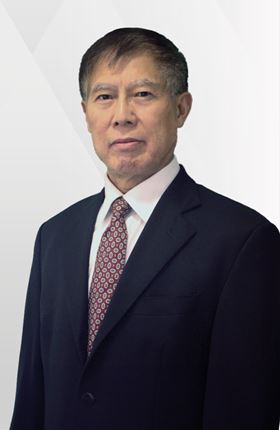Professor Yin has served as a Vice-President of the International Association for Computer Methods and Advances in Geomechanics (IACMAG) and has been a Co-Editor of International Journal of Geomechanics since 2005. He received the “Mao Yi-Sheng Soil Mechanics and Foundation Engineering Youth Award” in 2000, “John Booker Medal” in 2008, “Chandra S. Desai Excellence Award” in 2011 and “Outstanding Contributions Medal” in 2017, all from IACMAG. In 2011, he delivered the prestigious “Huang Wenxi Lecture” in Chinese Mainland and the “4th Distinguished Lecture” of Soil Mechanics and Foundation Division at the Canadian Geotechnical Society in 2024.
He was the first to propose a non-linear rheology theory for soils in 1989-1990, from which one/three-dimensional (1D/3D) Elastic Visco-Plastic (EVP) models were developed. Publication of his 1D/3D EVP models and their applications in consolidation analysis of soils (Yin and Graham, 1996) in Géotechnique was considered a milestone contribution to Geotechnique from 1948 to 2008. His fully coupled numerical methods incorporating Yin and Graham’s EVP models and a simplified Hypothesis B method, both for consolidation analysis/settlement calculation of soils, were adopted in the “Canadian Foundation Engineering Manual” (5th edition, 2023).
Yin-Graham's 3D Elastic Visco-Plastic model (3D-EVP) model has been adopted in the most popular international finite element geotechnical software "Plaxis", where the model is referred to as the "Soft Soil Creep" model. Yin-Graham's 3D-EVP model has also been implemented in the Imperial College (UK) software package "ICFEP" where their model is named "ET", that is the "Equivalent Time" constitutive model. Thus, many in the international geotechnical community are using Yin-Graham's models for deformation/stability analyses of soft/viscous soils, supporting the notion that Prof Yin is the world’s leading scholar in the non-linear rheology area.
As cited from the Chief Editor’s Editorial of the journal “Smart Construction and Sustainable Cities” published by Springer Nature in 2023, his invention of a transducer for direct measurement of effective stress in saturated soil solved “a centennially unsolved case” and was considered “an unprecedented achievement in the field of soil mechanics following Terzaghi’s seminal work”.

